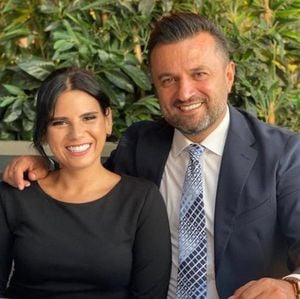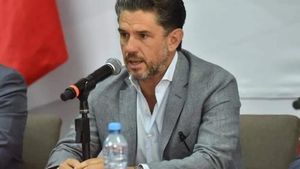In a remarkable display of dissent, Judge Lawrence VanDyke of the U.S. Court of Appeals for the 9th Circuit has stirred controversy by posting an 18-minute video where he disassembles firearms in response to his colleagues’ upholding California’s law banning large-capacity magazines. The video, uploaded on March 20, 2025, coincided with a 7-4 decision from the court finding that such magazines are not considered protected arms under the Second Amendment.
VanDyke, who was appointed by President Donald Trump in 2019, criticized the ruling, declaring that his fellow judges displayed a “basic misunderstanding of how firearms work.” According to VanDyke, large-capacity magazines should be viewed as essential components that enhance a firearm’s function rather than mere accessories. He elaborated, stating, “I think anyone with a basic familiarity with firearms could show you that this attempted distinction is simply inconsistent with reality.”
The unusual method of dissent raised eyebrows among his colleagues, notably Judge Marsha Berzon, who deemed VanDyke’s actions “wildly improper.” In her written concurrence with the majority opinion, Berzon argued that by producing the video, VanDyke effectively positioned himself as an expert witness in a case that he was meant to judge, flouting established judicial protocols. “Judge VanDyke has in essence appointed himself as an expert witness in this case,” Berzon remarked, illustrating her concerns regarding the procedural mishaps evidenced by VanDyke’s video presentation.
In his video, VanDyke aimed to provide a visual tutorial explaining why he believes large-capacity magazines should be protected under the Second Amendment. He stated, “I originally planned to explain all of this in writing...but it occurred to me that showing is much more effective than telling.” This hands-on demonstration took place in his chambers, with firearms he assured were rendered inoperable for safety purposes.
VanDyke's critique centers around the premise that magazines holding more than 10 rounds are “the most common magazines in the country” and should not be categorized as accessories. He argued that such magazines play an integral role in the functionality of a firearm and, as such, should be covered under the protections afforded by the Second Amendment.
Additionally, during the video, VanDyke predicted that if the majority’s reasoning were allowed to remain unchallenged, it could lead to increasingly restrictive measures that might jeopardize a citizen’s ability to arm themselves effectively for self-defense. He directly challenged the state’s argument, questioning, “If the majority’s assessment is legitimate, could it also be applied to banning semi-automatic firearms?”
Although VanDyke’s video did not affect the 9th Circuit’s ruling, it has indeed fostered a robust conversation within both legal and public spheres about the role of judges and their expressions in the age of social media. Legal experts have chimed in, asserting that while dissent is a fundamental aspect of judicial processes, the manner in which VanDyke delivered his dissent could set a troubling precedent. Jacob Charles, a law professor at Pepperdine University, stated, “In my opinion, it is beyond question inappropriate. Judges shouldn’t be striving to be social media influencers.”
The public and other experts are left pondering the implications of such a departure from traditional judicial conduct. Many believe it could undermine the perceived integrity of the judiciary, with one commentator emphasizing that courts have historically relied on written opinions rather than performative ones, suggesting that VanDyke’s approach might prioritize personal branding over judicial propriety.
Despite VanDyke’s desire for his video to clarify misconceptions regarding firearms, it seemingly added more fuel to the fire of criticism directed at him, particularly considering the American Bar Association's 2019 “Not Qualified” rating that labeled him as lacking substantive knowledge necessary for the judicial role.
Ultimately, VanDyke’s dissent video has become a focal point for discussions around gun laws in America, reinforcing the passionate debates over Second Amendment rights juxtaposed with regulations aimed at curbing gun violence. California Attorney General Rob Bonta hailed the ruling as a “key component in our efforts to fight gun violence and prevent senseless injuries and deaths,” reaffirming the state’s commitment to prioritize public safety while navigating these contentious legal waters.
The ruling and the surrounding discourse highlight a deepening divide in American society over gun ownership, usage, and regulation, making the implications of VanDyke’s actions and the court’s decision broadly relevant.



